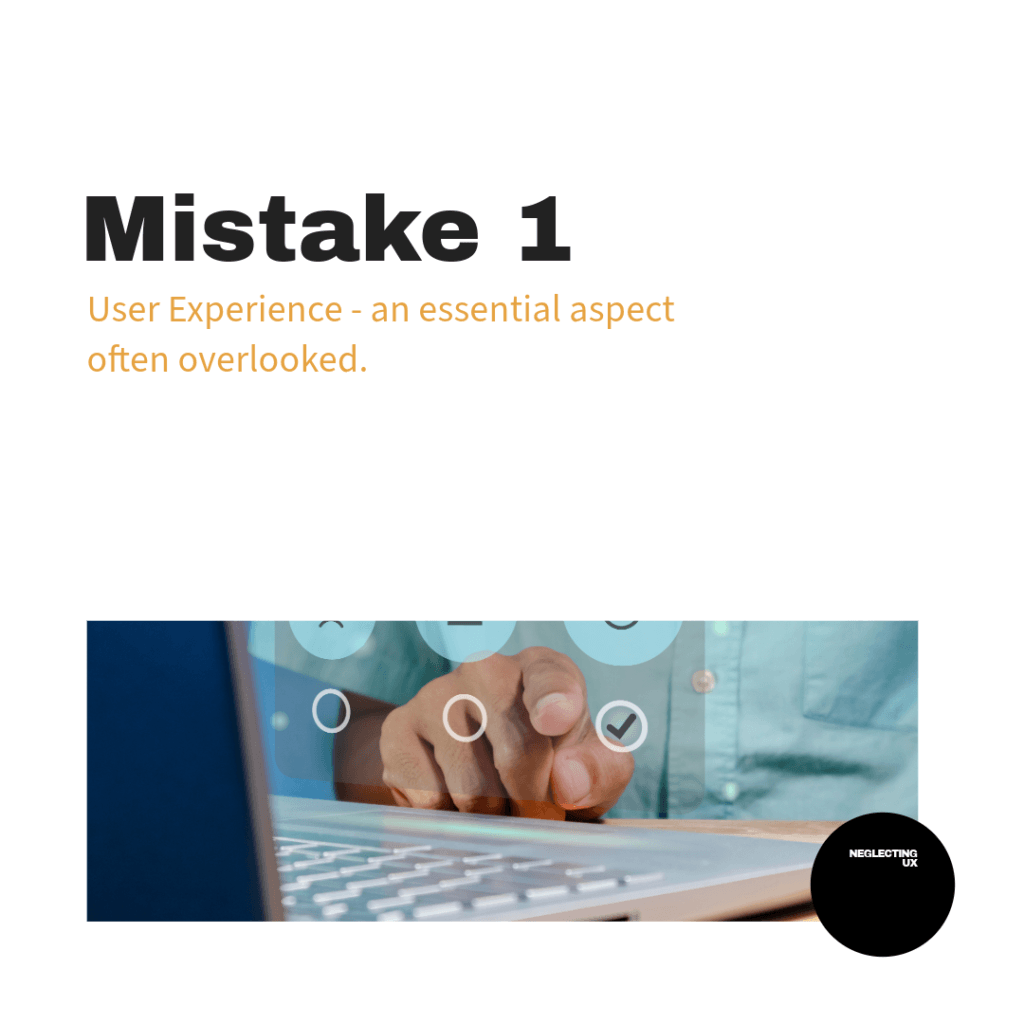I. Introduction: Setting the Stage for a Successful Business Website

1. Importance of a Business Website in the Digital Age
In today’s digital-first world, having a business website is essential. It serves as your online storefront, providing potential customers with information about your products or services, and facilitating engagement. A well-constructed business website can enhance your credibility, increase brand visibility, and help you reach a broader audience beyond your local market. Furthermore, with growing consumer tendencies to research online before making purchases, a robust website can be a game-changer in attracting and retaining customers.
2. First Impressions Matter: The Role of Website Design
Website design is crucial in shaping the first impression of your brand. A visually appealing, user-friendly website can instill trust and make visitors more likely to explore further. Key design elements include intuitive navigation, responsive layouts for mobile devices, and effective use of colors and typography that reflect your brand identity. Poor design can lead to high bounce rates, meaning that visitors leave early, which can severely impact your business reputation and potential sales.
3. Objective: Identify and Avoid Common Pitfalls
Some folks would argue that this bullet point information is not very personable, I would be inclined to agree. However, if you are navigating this site because you are a self-starter seeking knowledge on how to build your own business website, then the bulleted text is key for efficient learning. Feel free to check out my Wealthy Affiliate review to learn more on how I got started building web sites.
- Neglecting Mobile Optimization: With increasing mobile usage, your website must function seamlessly on all devices.
- Ignoring Load Times: Slow-loading websites frustrate users and can lead to lost opportunities.
- Lack of Clear Call-to-Actions (CTAs): Every page should guide visitors on what to do next, whether it’s making a purchase or signing up for a newsletter.
- Overcomplicating Design: Keep it simple. Too many elements can confuse users and detract from the main purpose of the website.
- Failure to Update Content: Regularly review and refresh your content to keep it relevant and engaging. Outdated information can turn potential customers away.
II. Mistake 1: Neglecting the User Experience (UX)

1. Definition and Importance of UX
User Experience (UX) refers to the overall experience a visitor has when interacting with a website, encompassing aspects such as usability, accessibility, and the overall pleasure derived from using the site. A positive UX is paramount because it determines how easy and enjoyable it is for users to navigate your site, find information, and complete desired actions. Prioritizing UX can lead to higher user satisfaction, increased engagement, and ultimately, greater conversion rates.
2. Common UX Issues
- Slow Loading Times: A website that takes too long to load can frustrate users, leading them to abandon the site before it even fully renders.
- Poor Navigation: If visitors cannot easily find what they’re looking for due to a complicated or cluttered navigation structure, they are likely to leave.
- Non-Responsive Design: With more users accessing websites via mobile devices, a site that does not adapt well to various screen sizes can alienate a significant portion of your audience.
3. Strategies to Enhance UX
- Intuitive Design: Create a clean and straightforward layout that guides users effortlessly through your site. Use clear labels for menus and ensure that essential information is easily accessible.
- Mobile Optimization: Implement responsive design principles to ensure that your site looks and functions well on all devices, enhancing the experience for mobile users.
- Fast Load Speeds: Optimize images, streamline code, and consider using a Content Delivery Network (CDN) to ensure your site loads quickly. Aim for loading times of three seconds or less to keep users engaged and reduce bounce rates.
III. Mistake 2: Overlooking SEO Fundamentals

1. Role of SEO in Website Visibility
Search Engine Optimization (SEO) is vital for improving a website’s visibility in search engine results. By effectively using SEO strategies, businesses can increase their organic traffic, attract relevant visitors, and ultimately enhance their brand’s online presence. In an age where most users rely on search engines to find information, products, and services, neglecting SEO can significantly limit a website’s potential audience.
2. Common SEO Mistakes
- Keyword Stuffing: This involves overloading a web page with keywords in an attempt to manipulate search rankings. It compromises content quality and can lead to penalties from search engines.
- Poor Metadata: Failing to write compelling and relevant meta titles and descriptions can reduce click-through rates and hinder search visibility. These elements should accurately reflect the content and include target keywords.
- Lack of Alt Text: Not providing alt text for images can limit accessibility and negatively impact SEO. Alt text helps search engines understand the content of images and improves the site’s overall relevance.
3. Best Practices
- Quality Content: Creating high-quality, informative, and engaging content is the cornerstone of effective SEO. Content should answer users’ queries and provide value, encouraging longer visits and shares.
- Effective Keyword Use: Perform keyword research to identify relevant terms and phrases that your target audience is searching for. Use these keywords strategically throughout your content, headers, and metadata to enhance visibility without compromising readability.
- On-page Optimization: Ensure that each page is optimized for both users and search engines. This includes structuring headers appropriately, using internal and external links, optimizing images with alt text, and ensuring a clean URL structure. Additionally, implementing schema markup can help improve how your content is presented in search results, attracting more clicks.
IV. Mistake 3: Ignoring the Importance of Content

1. Content is King
Quality content remains a fundamental aspect of any successful digital strategy. It serves as the primary means of engaging visitors, building trust, and establishing authority within a niche. Well-crafted content not only attracts users but also encourages them to interact, share, and return, ultimately fostering a loyal audience.
2. Pitfalls
- Duplicate Content: Replicating content across multiple pages or platforms can confuse search engines and lead to penalties, thereby diminishing a site’s ranking and credibility.
- Irrelevant Topics: Failing to focus on relevant topics can alienate your audience. Content should align with what your target audience is interested in, driving engagement and reducing bounce rates.
- Infrequent Updates: Neglecting to update content regularly can lead to outdated information and diminished user interest. An inactive website may struggle to retain visitors, resulting in reduced trust and authority.
3. Content Strategy
- Regular Updates: Consistently refreshing existing content and adding new articles or features helps maintain user interest and signals to search engines that the website is active and relevant.
- Relevant and Engaging Topics: Crafting content that resonates with your audience is crucial. Pay attention to trends, user feedback, and industry developments to ensure that your content remains valuable and engaging.
- Multimedia: Incorporating various formats such as images, videos, infographics, and podcasts can enhance the user experience and cater to different audience preferences. Multimedia elements help break up text and can make complex topics more digestible.
V. Mistake 4: Failing to Incorporate Strong Calls to Action (CTAs)

1. Purpose of CTAs
Calls to Action are essential for guiding user behavior and encouraging visitors to take specific actions, such as signing up for a newsletter, downloading a resource, or making a purchase. A strong CTA provides direction and clarity, helping to convert casual visitors into engaged users or customers.
2. Common CTA Errors
- Vague Language: Using unclear or ambiguous wording can confuse users about what they are supposed to do. CTAs should be direct and actionable.
- Poor Placement: If CTAs are buried within content or placed in areas where users don’t typically look, their effectiveness diminishes. Properly positioning CTAs in high-visibility areas is crucial for usability.
- Too Many CTAs: Overloading a page with multiple CTAs can overwhelm visitors and lead to decision paralysis. It’s best to focus on one or two clear actions to avoid confusion.
3. Effective CTA Practices
- Clear, Concise Language: Use direct language that clearly communicates the desired action. Phrases like “Sign Up Now” or “Download for Free” are straightforward and compelling.
- Strategic Placement: Position CTAs where they are easily visible, such as at the beginning or end of a page, within the content, or as pop-up prompts. Ensuring that CTAs stand out visually can also help draw attention.
- Testing and Optimization: Regularly testing different CTAs—varying wording, colors, and placements—can provide insights into what resonates best with your audience. Analyzing performance data allows for continual refinement of your approach.
I Appreciate You!
Do you appreciate the read? Please feel free to ask any specific questions in the comments below. We would be happy to help address any issues you may have on your journey to learning how to build your own business website. To find out how I got started web building and where most of my education stemmed from you can read my Wealthy Affiliate review here.

Hi Jacob,
Your article provides a comprehensive overview of common mistakes to avoid when building a business website. The emphasis on user experience, SEO, and content strategy is particularly insightful. I agree that neglecting these areas can significantly impact a website’s effectiveness.
My question is: How do you suggest balancing the need for SEO optimization with maintaining high-quality, engaging content? Are there specific strategies to ensure that content remains both search-friendly and appealing to readers?
Hi Tinuke,
Thank you for your thoughtful comment! I completely relate to your question about balancing SEO and engaging content. When I first started building websites, I felt completely useless, but Wealthy Affiliate taught me everything I needed to know. It was eye-opening and made my business degree feel almost irrelevant in comparison.
To balance SEO and quality content, I suggest researching keywords that resonate with your audience while maintaining a natural flow in your writing. You can also create valuable content that addresses user intent, which often aligns with SEO best practices. Using tools to analyze readability and keyword density can help ensure you remain engaging without sacrificing search-friendliness.
What strategies have you tried?
Hello. I think that starting a business and making it successful is a long-term game. It can be frustrating because you always see these ads for quick success. Like six figures in 6 months lies like that. And that’s not the way it works. In reality it’s all about the fundamentals and being persistent.
Hello Jake!
Thank you for your insightful comment. I completely agree with you—building a successful business is indeed a long-term endeavor that requires dedication and a strong grasp of the fundamentals. The allure of quick success can be tempting, but as you pointed out, the journey is more about persistence and steady growth.
In the digital age, having a solid business website is one of those crucial fundamentals. It serves as the face of your business and plays a vital role in establishing credibility and reaching your audience. By focusing on essential strategies and avoiding common pitfalls, you can create a website that not only supports your business goals but also enhances your customer’s experience.
I would love to hear more about your experiences and any specific challenges you’ve faced in weaving through the noise of quick-fix promises. Sharing these insights can be incredibly valuable for anyone navigating the same journey.
Looking forward to continuing the conversation!
Best Regards